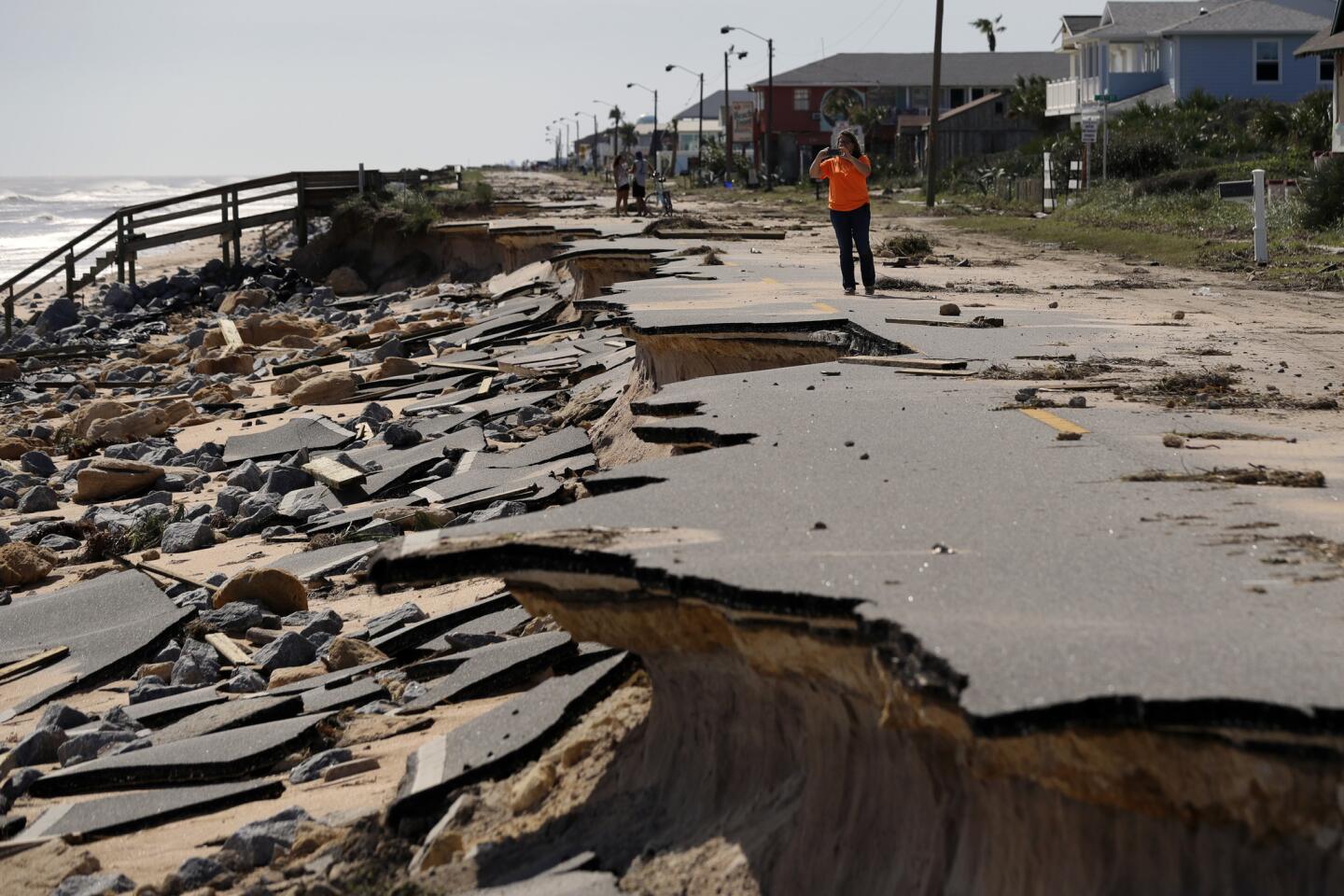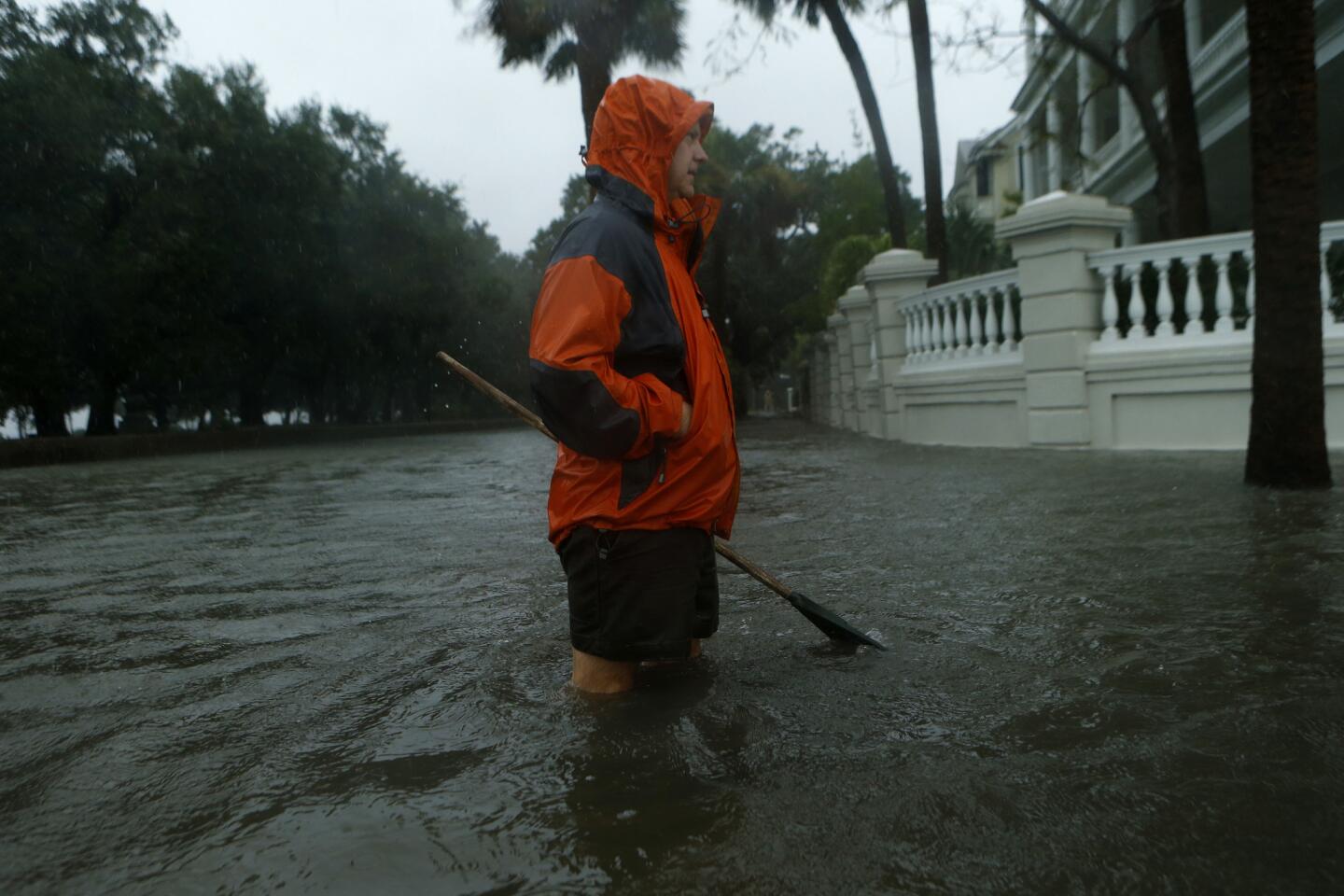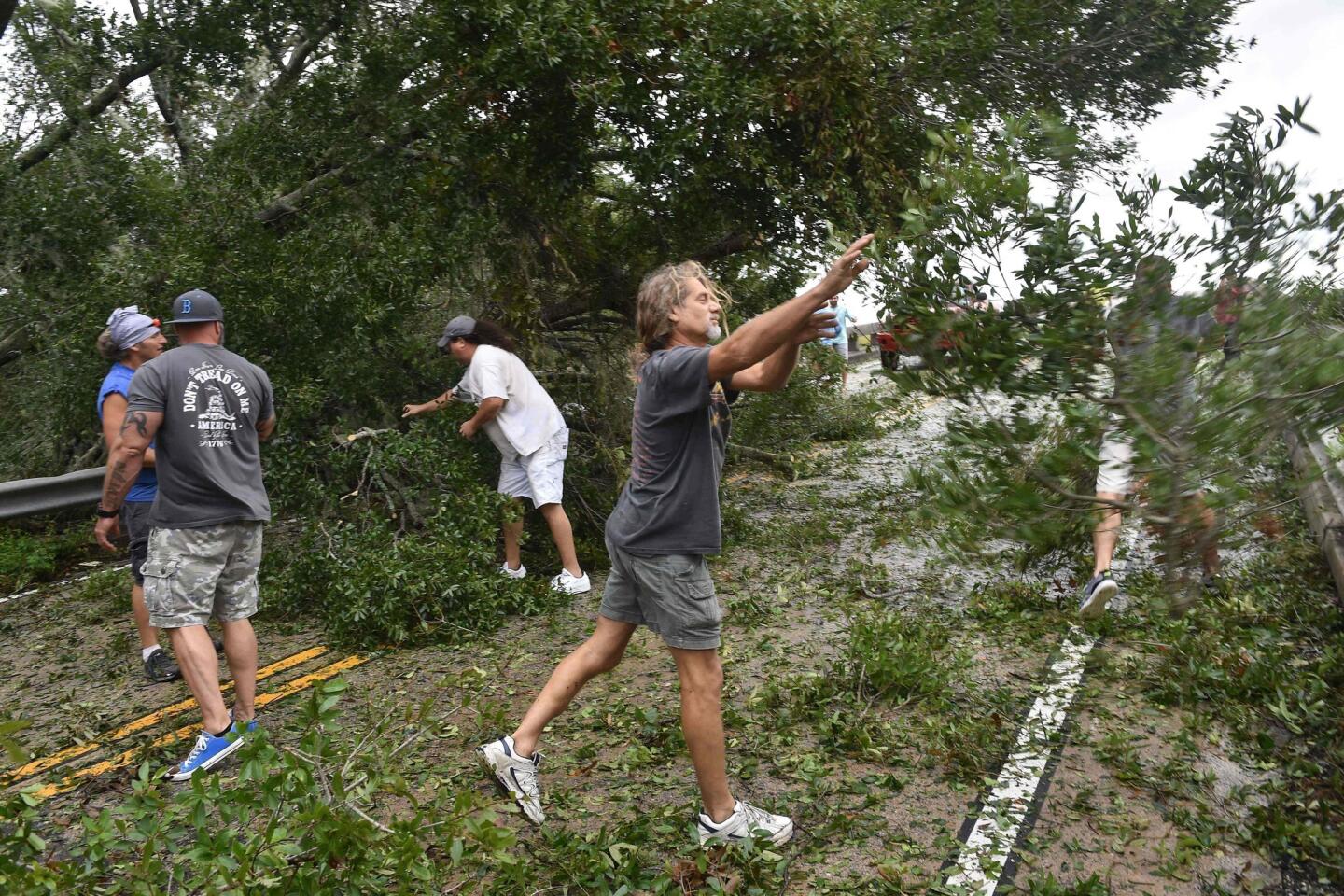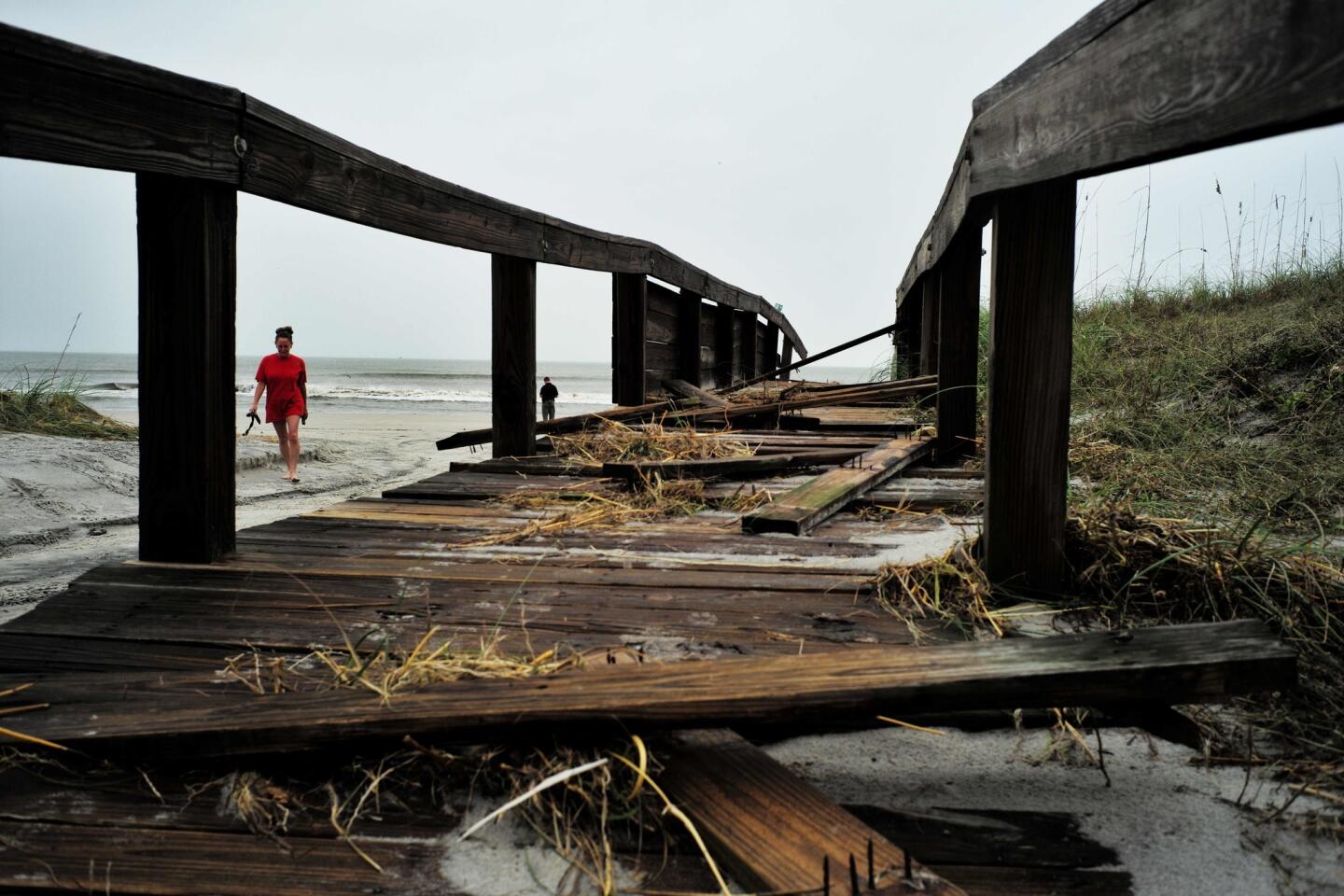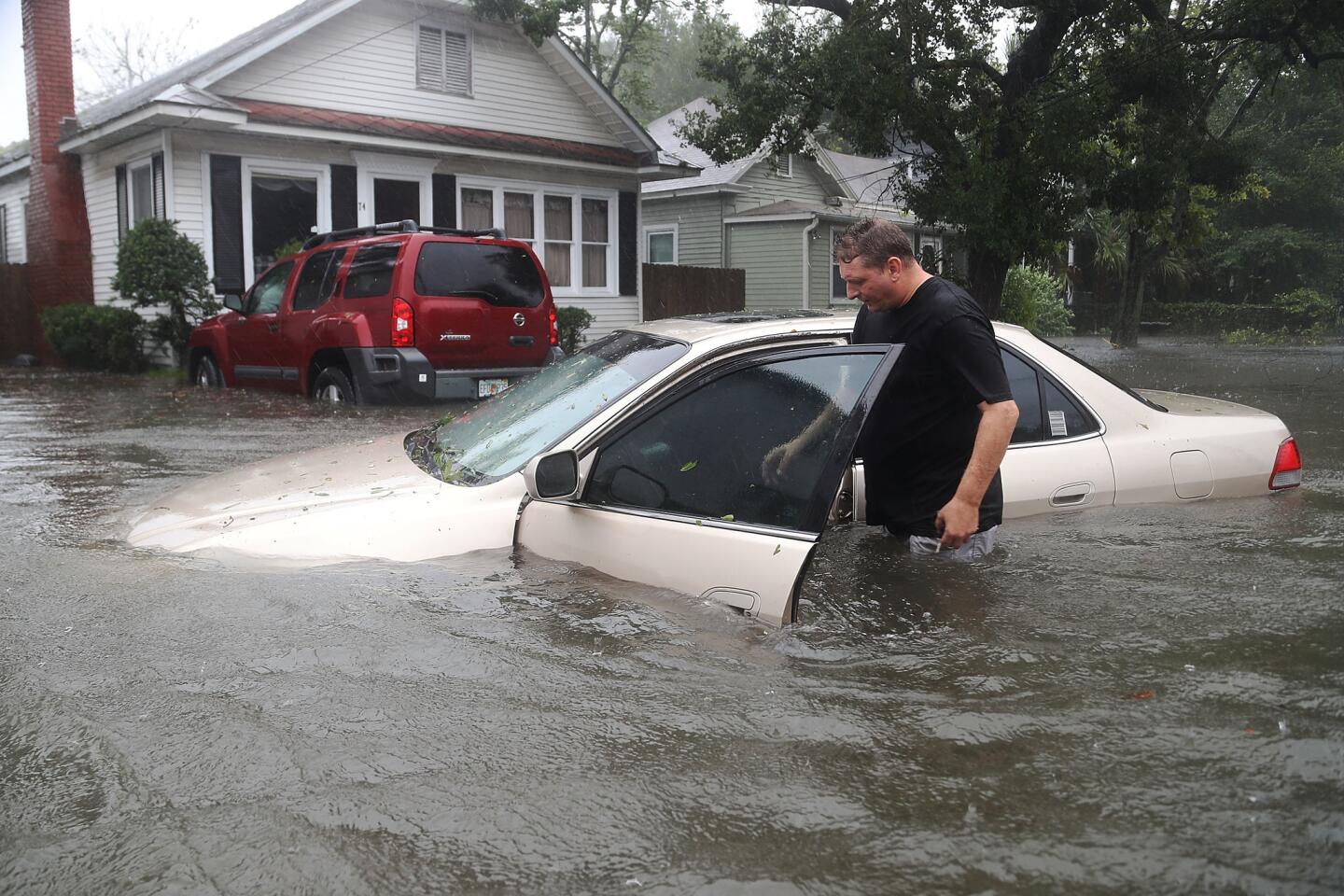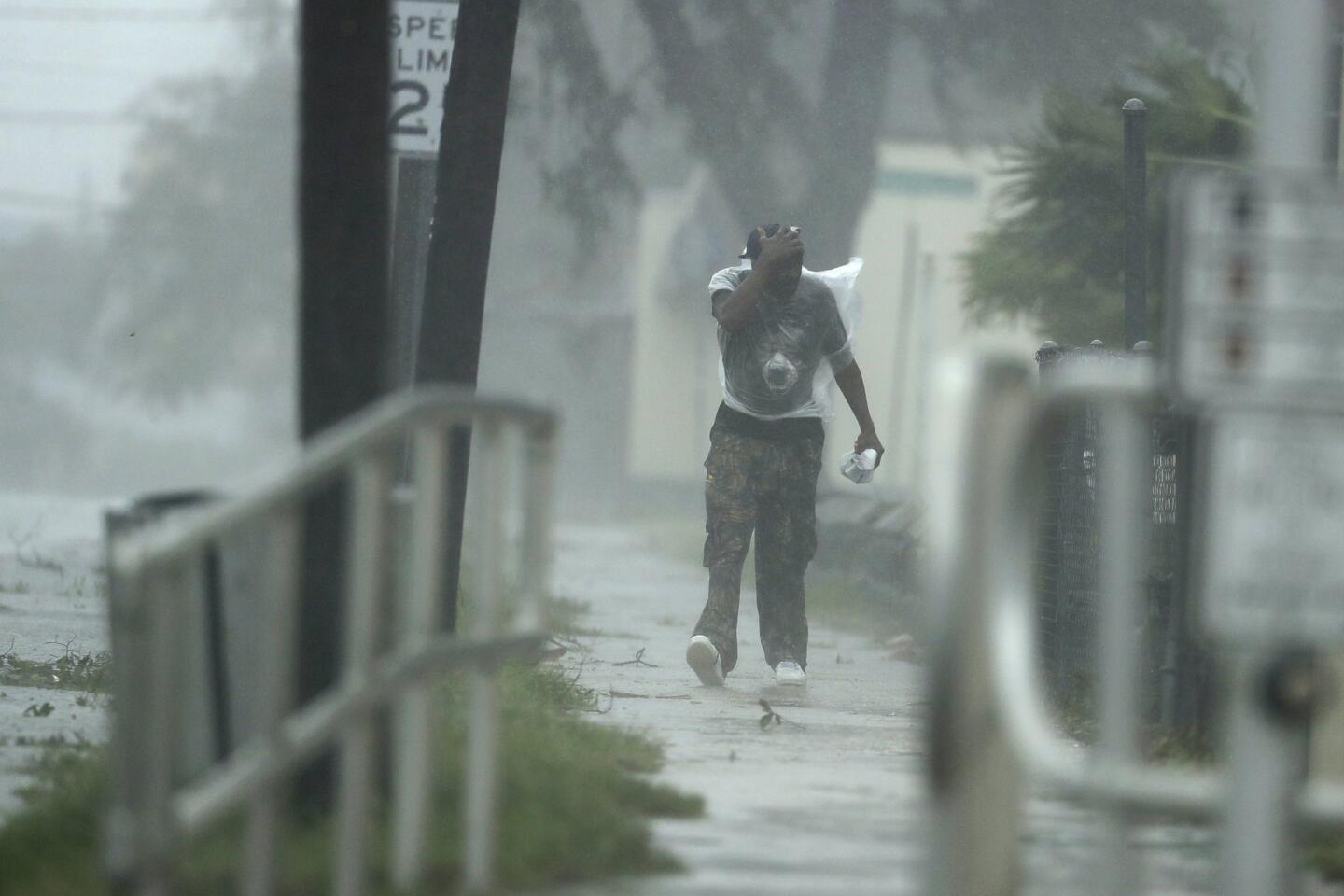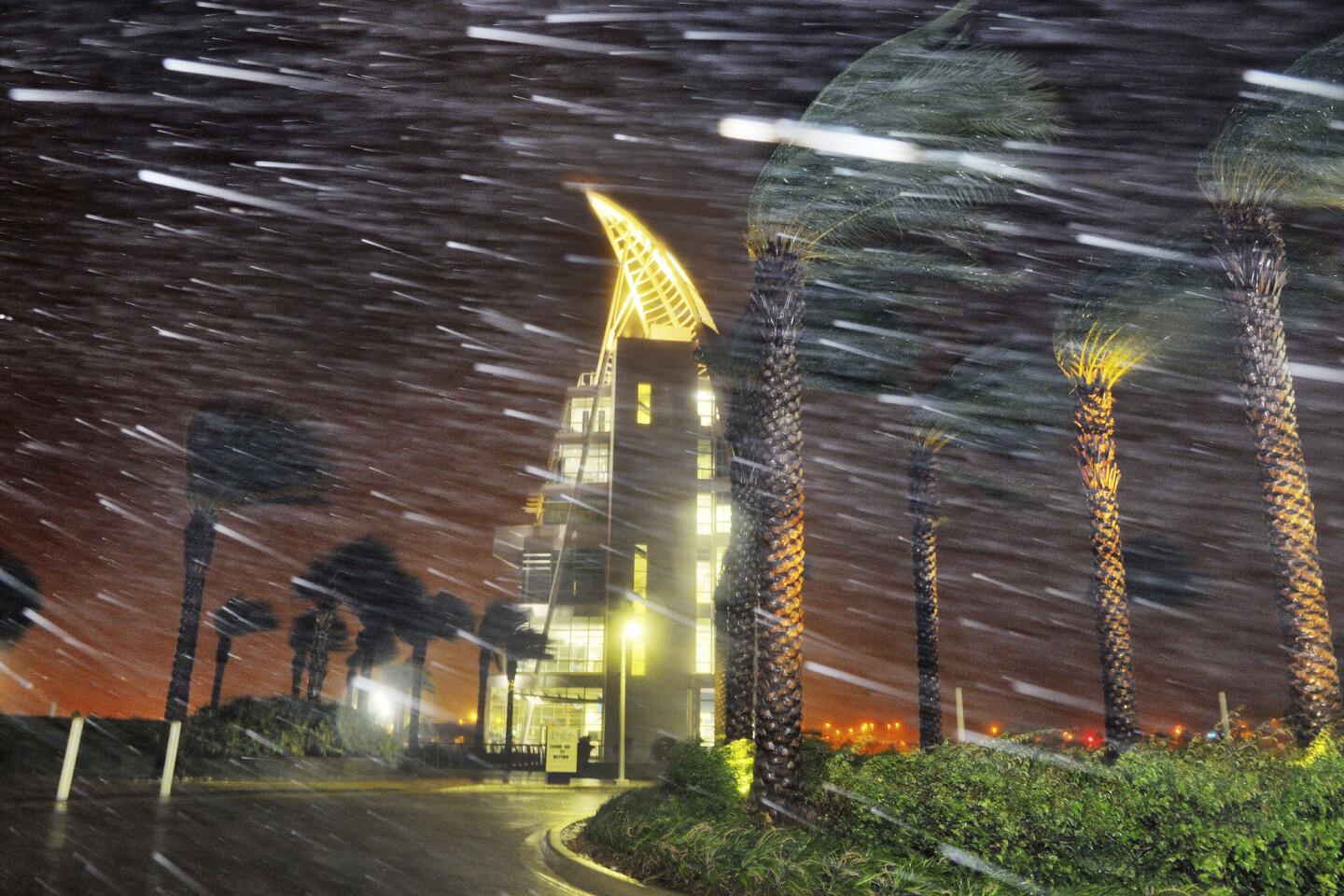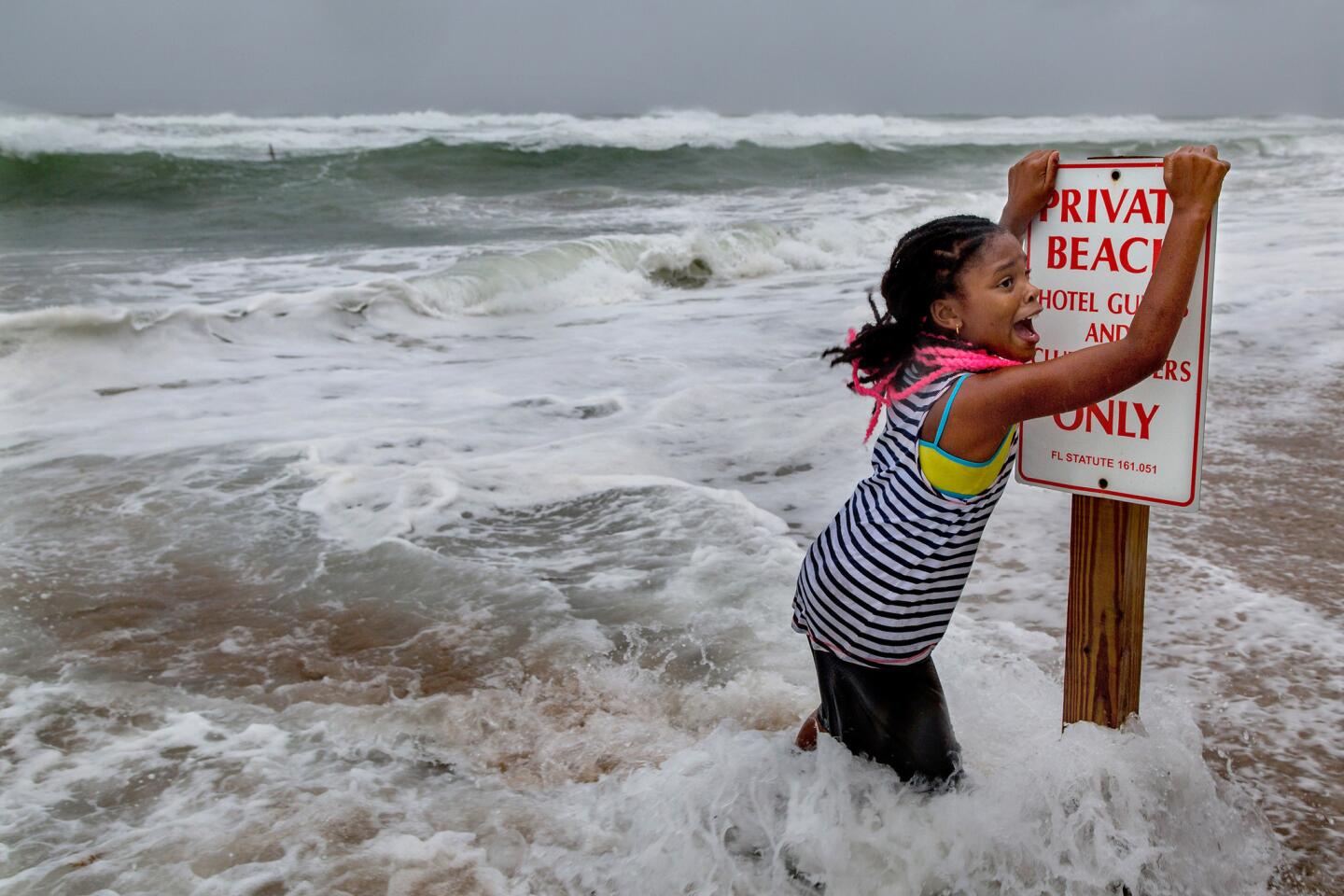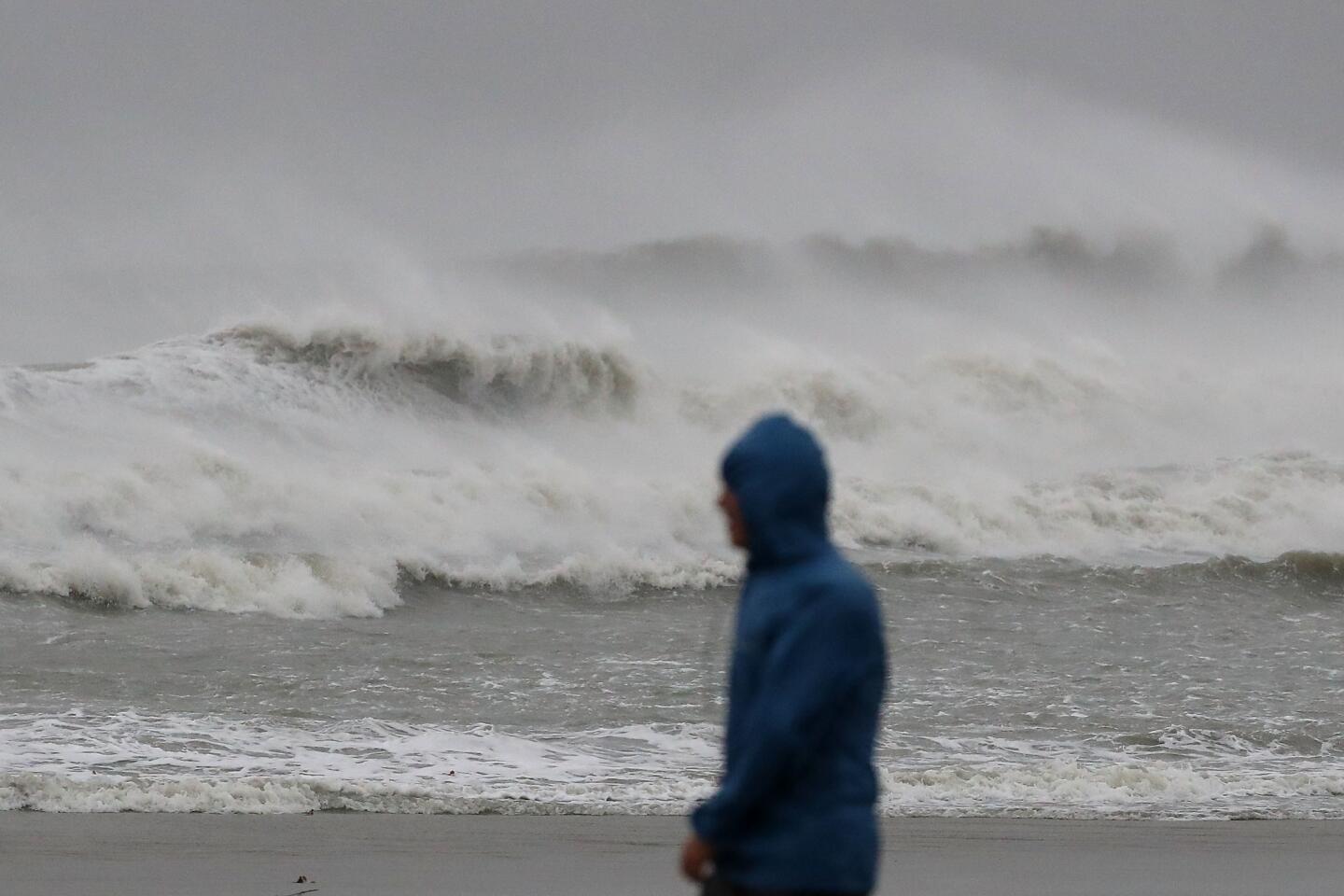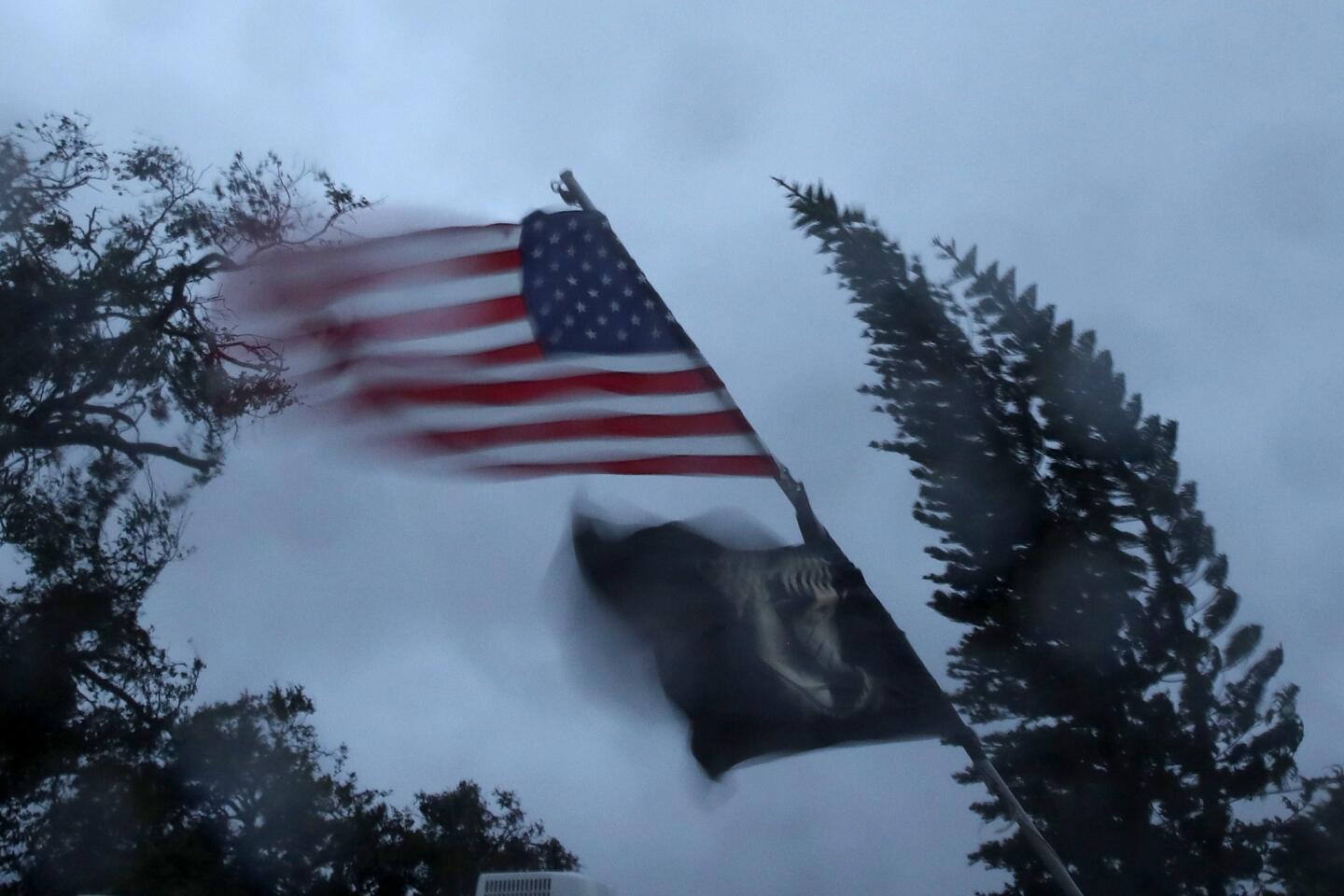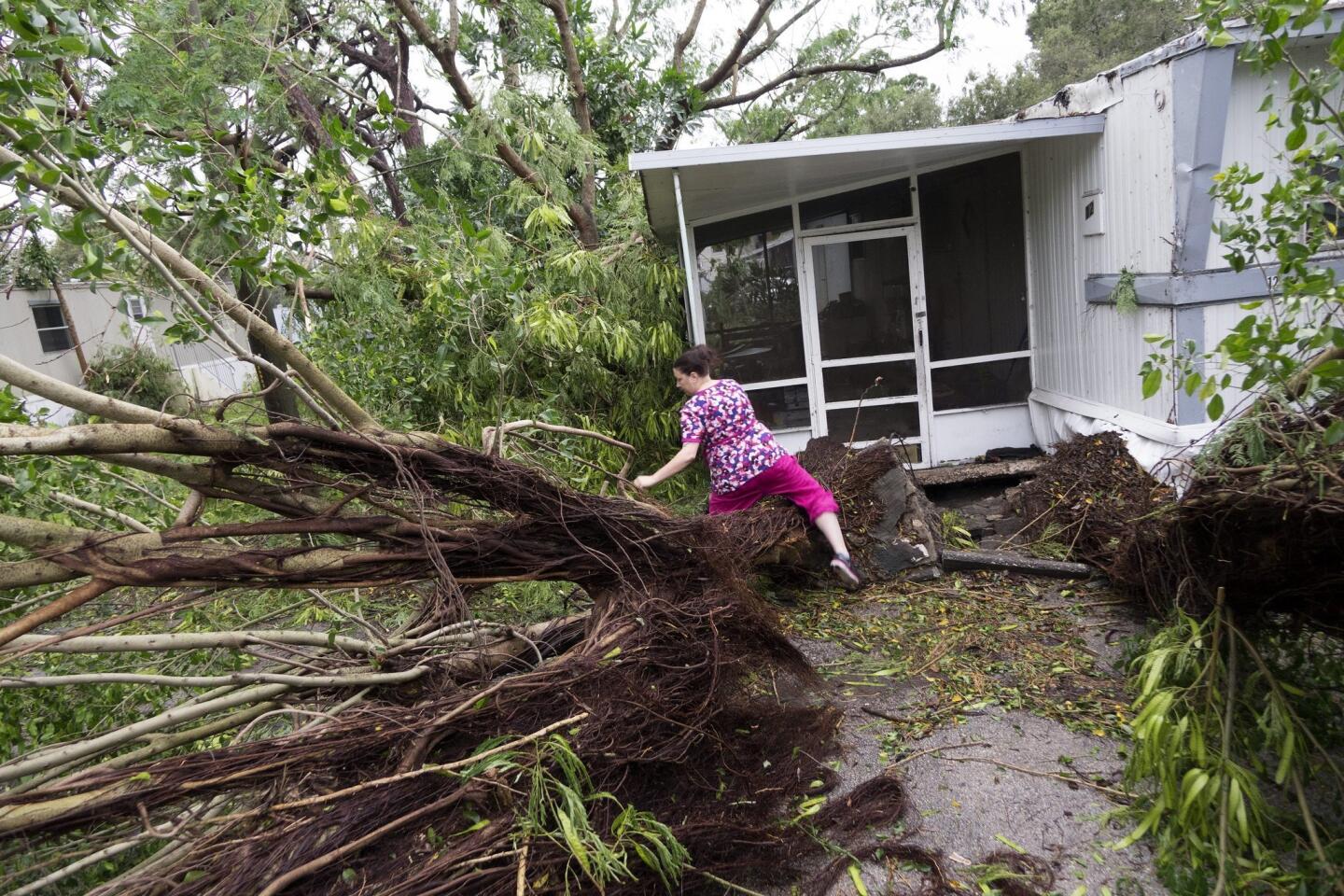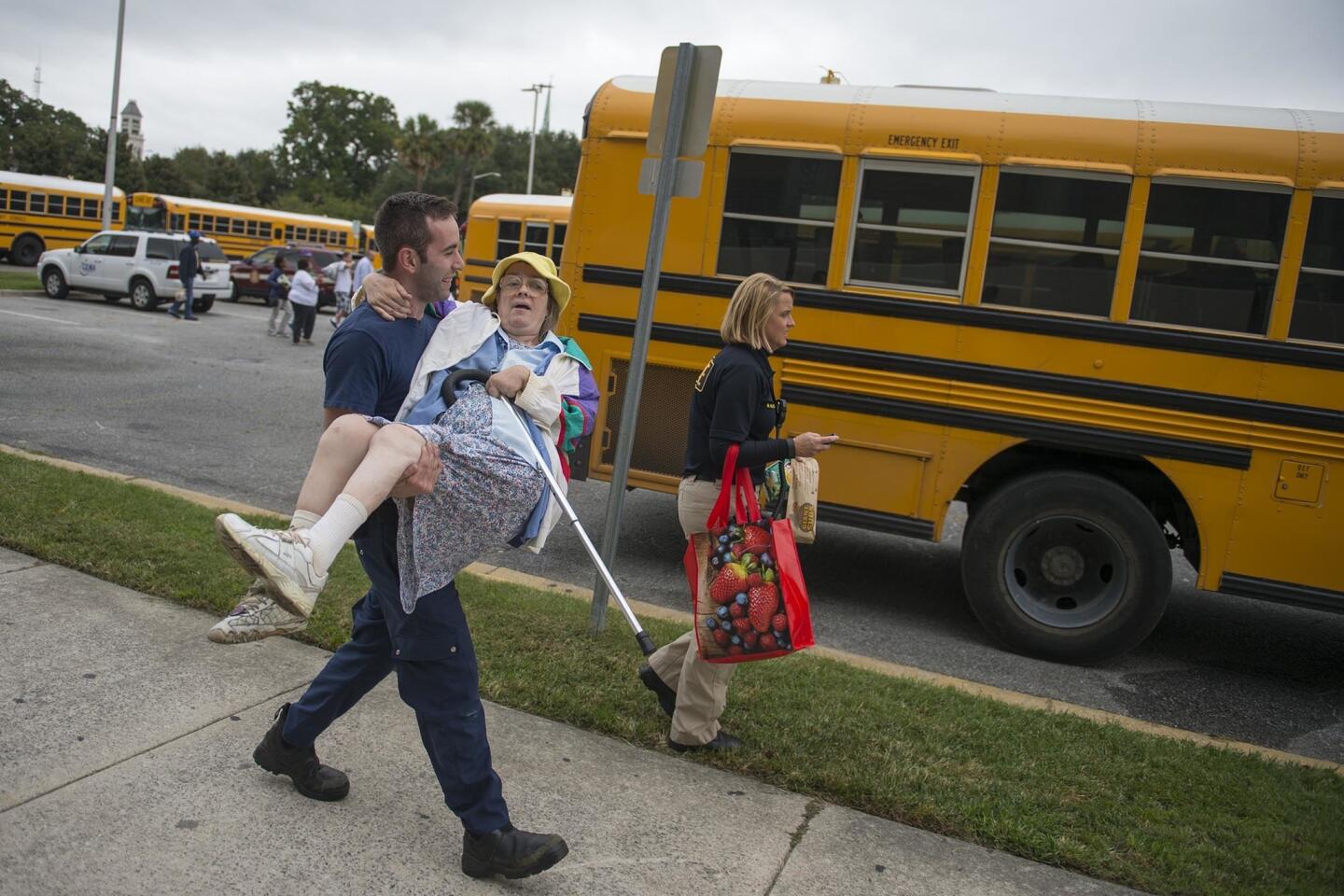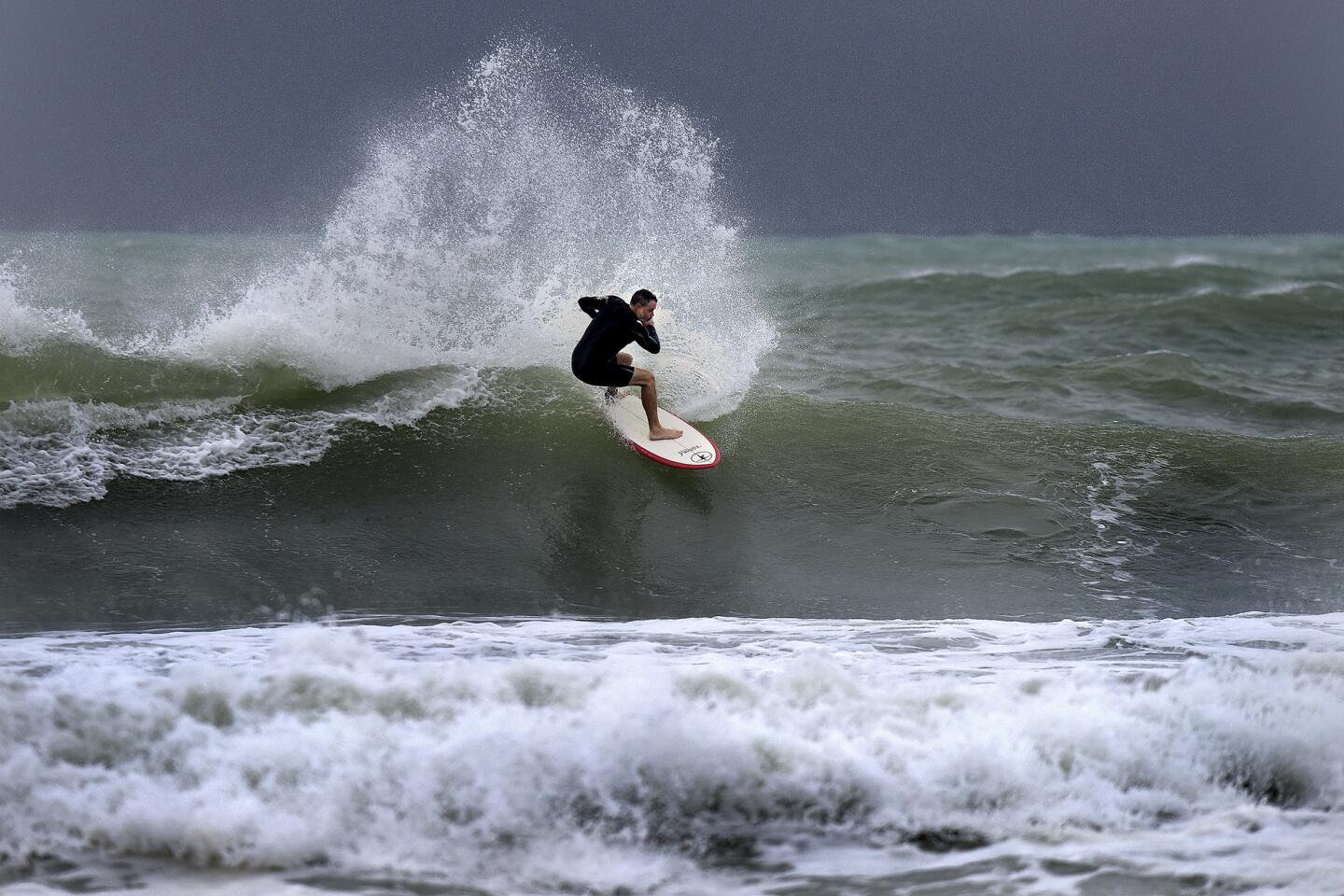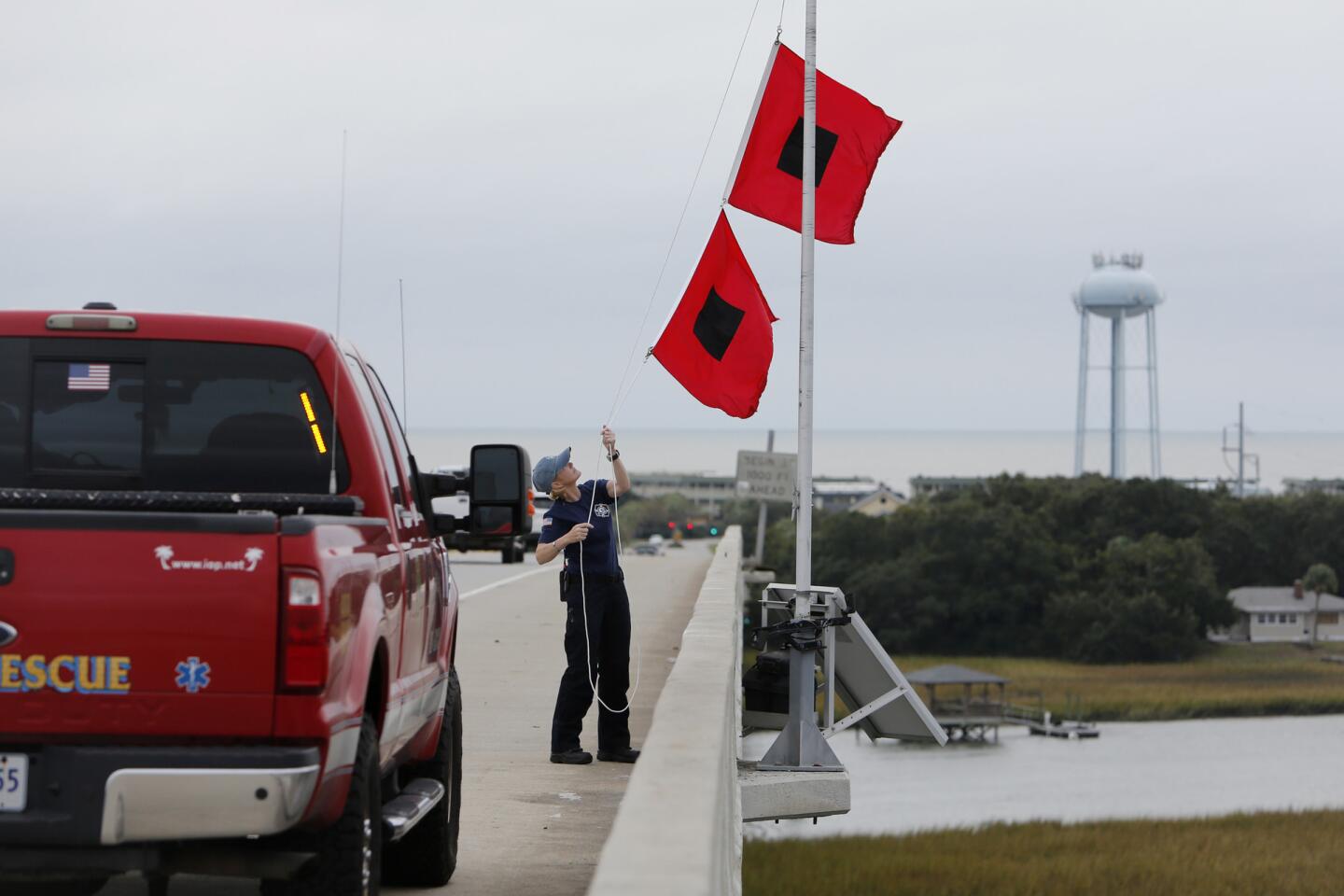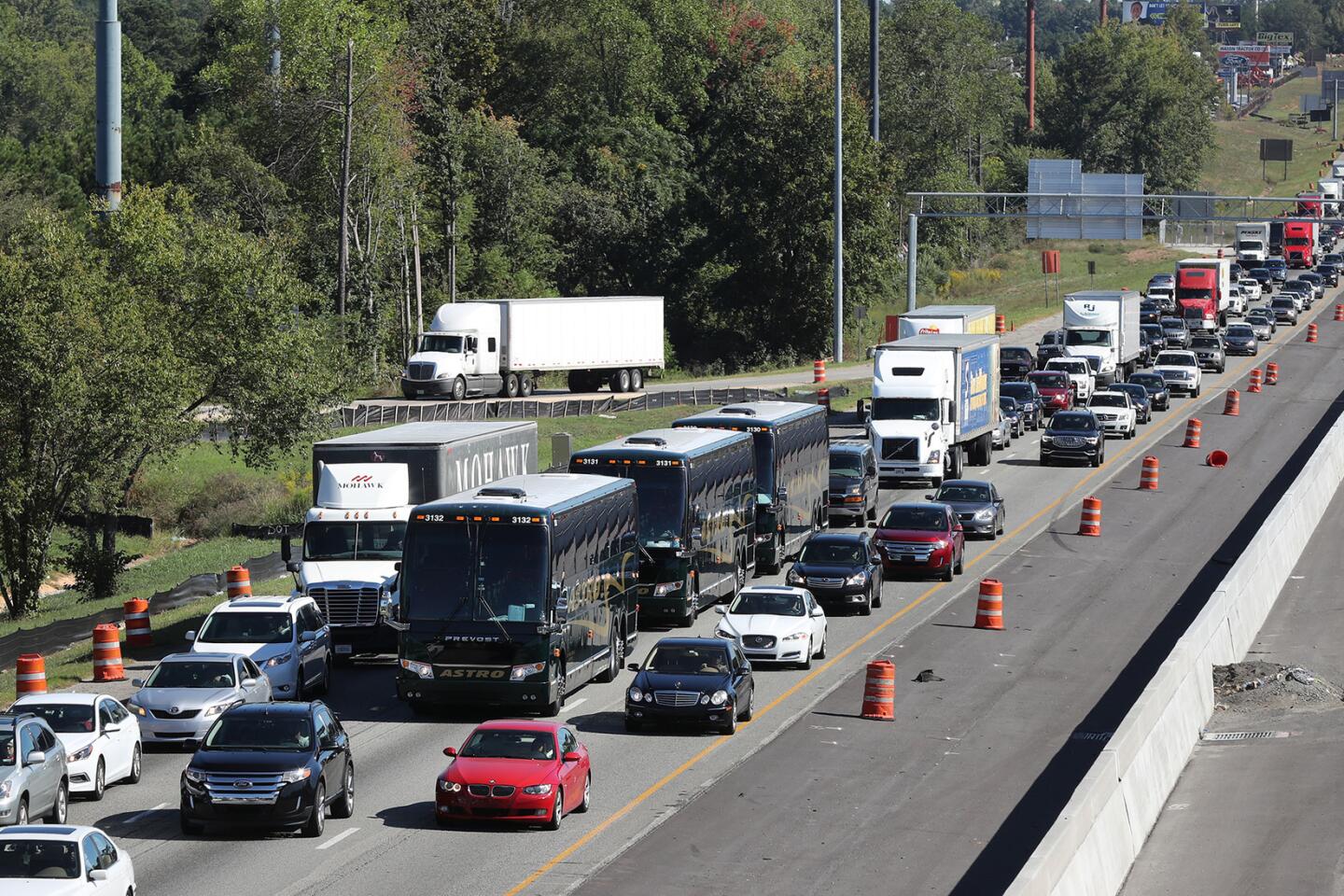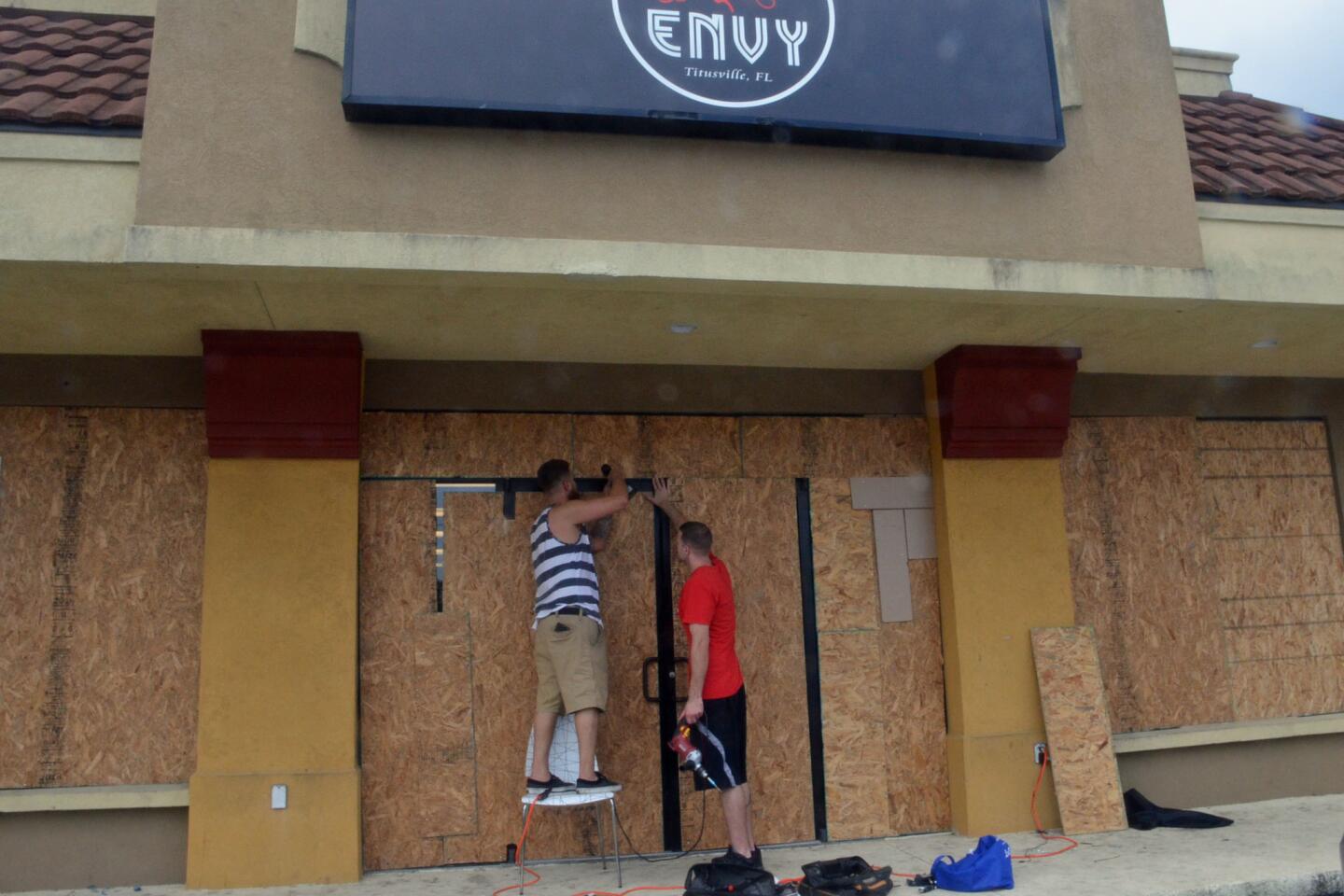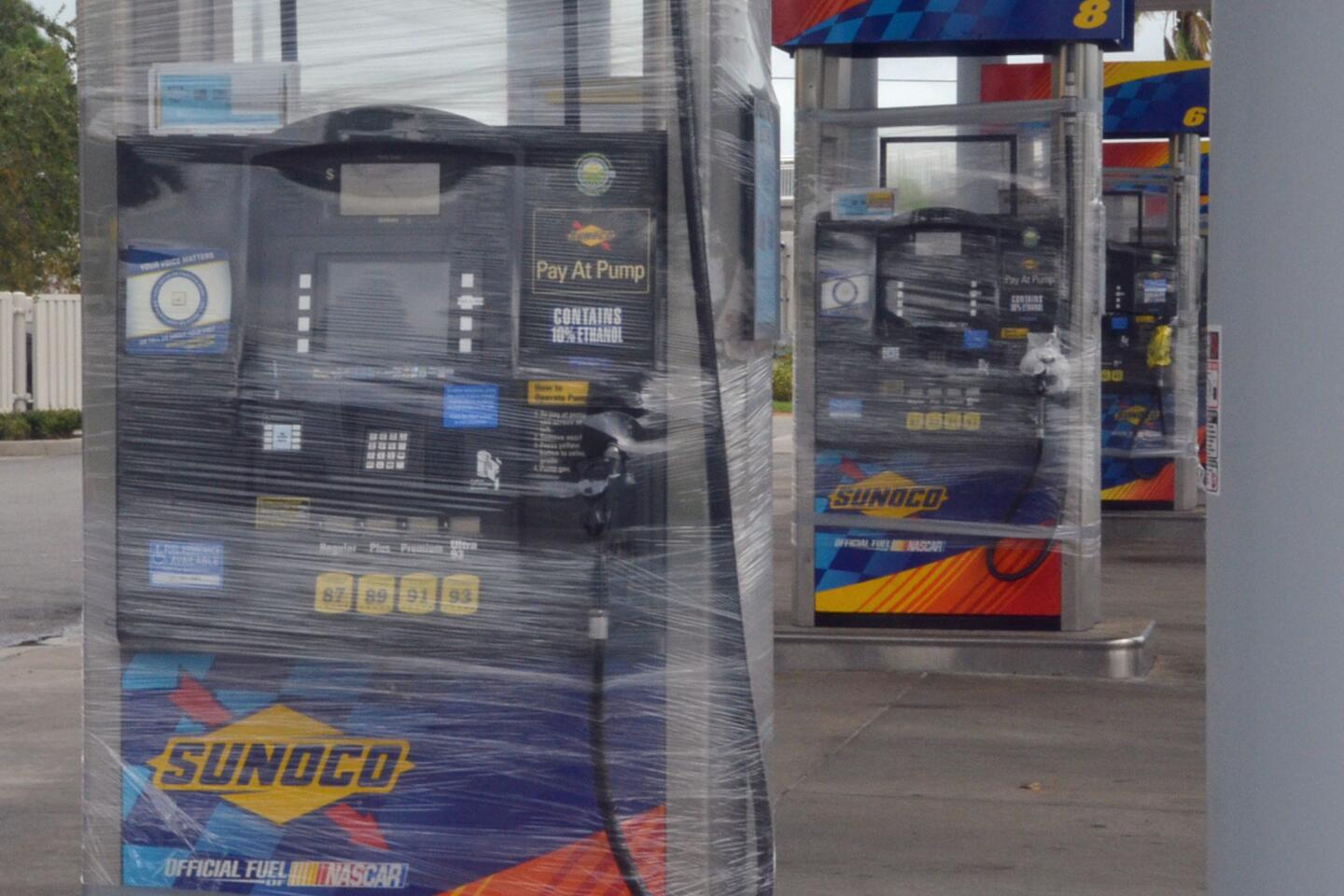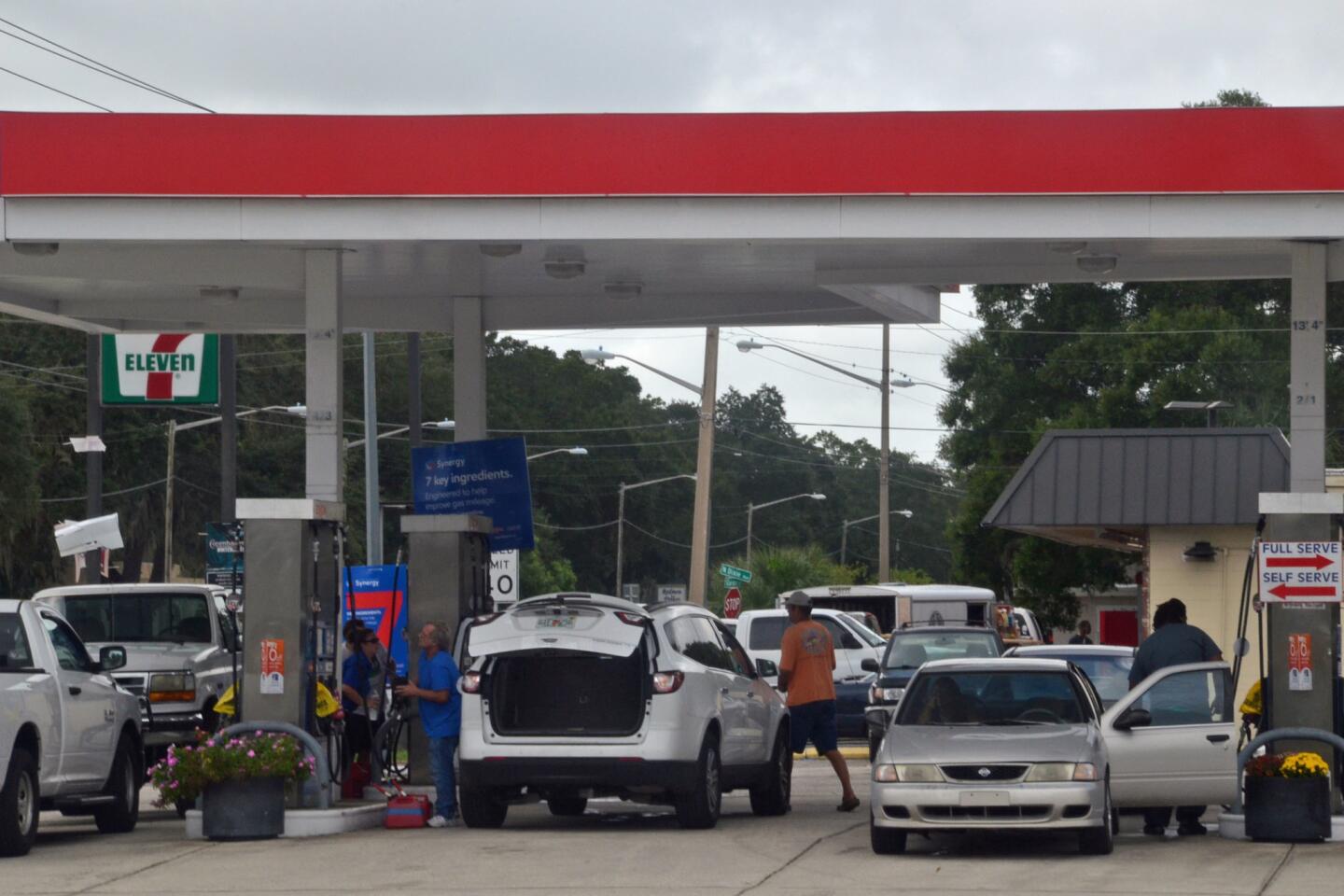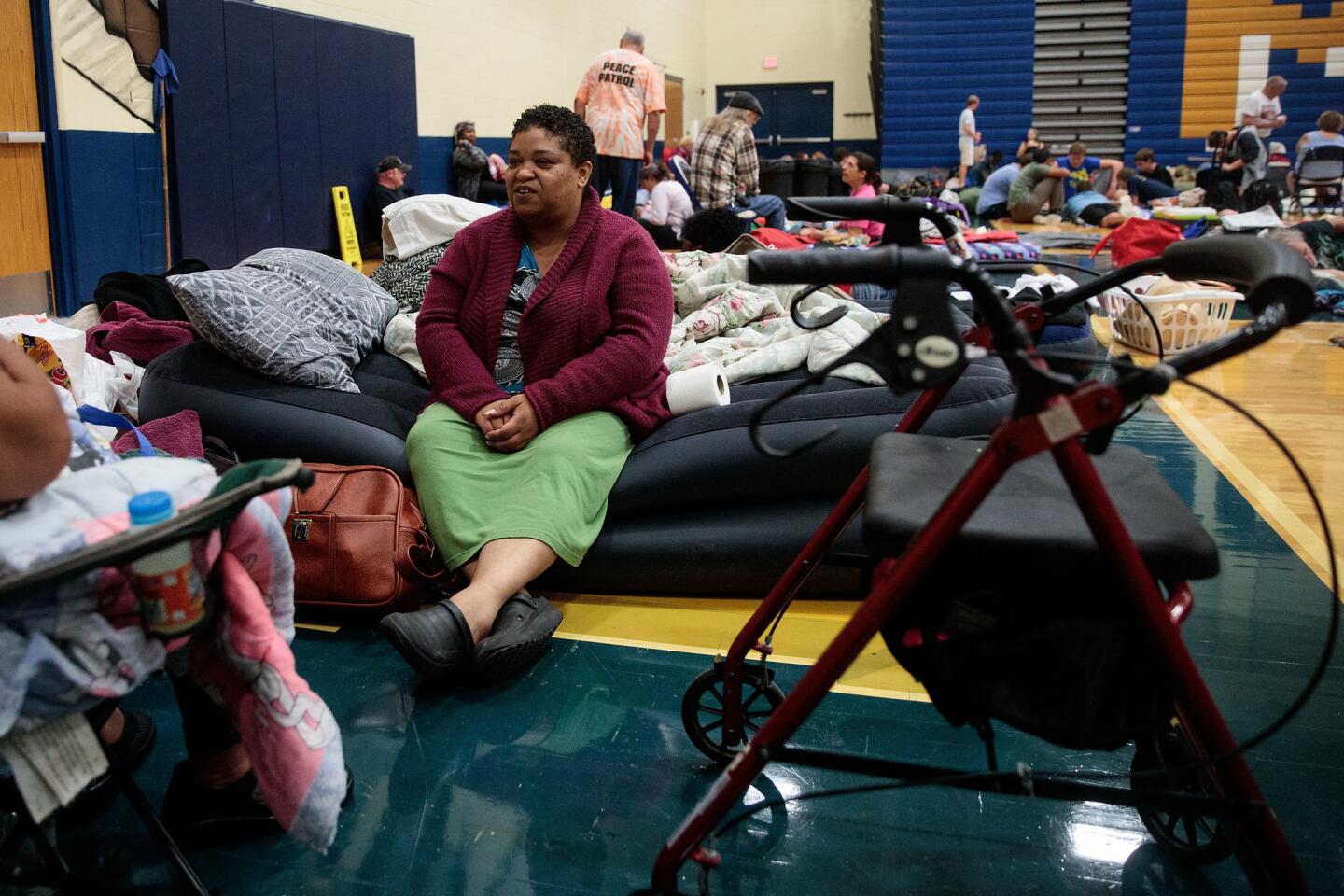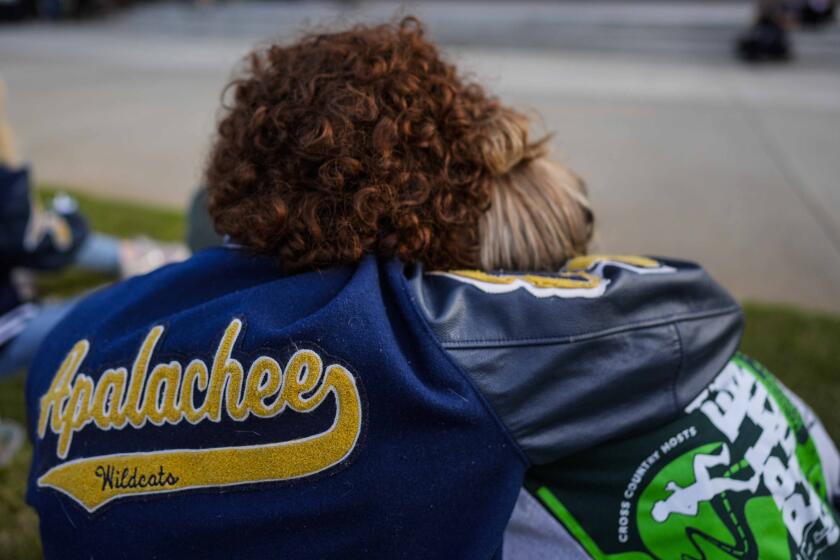After Florida ‘dodged a bullet’ from Hurricane Matthew, South Carolina braces for major storm surge
A slight wobble in the track of Hurricane Matthew on Friday saved Florida from potential catastrophe, and instead turned the storm into a giant wind and rain machine that knocked down power lines, uprooted trees and left two people dead.
But the legacy of the powerful hurricane — which killed at least 300 and possibly more than 800 in Haiti — was still undetermined as it continued its brutal path up the U.S. coastline.
There were projections of perilously surging seas and serious flooding in some historic Southern cities, including Savannah, Ga., and Charleston, S.C.
“We are very concerned about storm surge,” Florida Gov. Rick Scott said at an early Friday evening news briefing. “We have seen flooding in St. Augustine. There is the potential for a significant chance of flooding in Jacksonville. The flooding in this area could potentially last for days, and river flooding could last even longer.”
The National Weather Service said tide levels in South Carolina could reach or exceed those that occurred in October of 2015, when record rainfall led to major flooding and the deaths of almost 20 people.
South Carolina Gov. Nikki Haley on Friday was urging Charleston residents to leave town, an appeal which was echoed by Mayor John Tecklenburg.
“It really goes against my grain and against my nature to be inhospitable, but we’re asking everyone to please leave town,” Tecklenburg said at a news conference. “It’s that time.”
More than 2.5 million people in four states evacuated their homes in advance of the storm.
The break Florida needed occurred shortly before midnight Friday when the Category 3 hurricane jogged eastward just enough to keep the eye of the storm and its 120 mph winds offshore.
The storm continued to follow the Florida coastline throughout the day before taking a slight turn to the north-northeast, as if it were trying to mirror the north Florida-south Georgia coastline.
Matthew was downgraded to a Category 2 storm by Friday night, with winds closer to 100 mph. It was scheduled to reach Charleston by Saturday morning.
There were five deaths in Florida, three considered indirect storm-related fatalities.
In Volusia County, a woman was killed when she went outside Friday afternoon to feed some animals during a lull in the storm and was struck by a falling tree. In the northern county of Putnam, a woman died when a tree fell on her camper trailer.
Three people died in St. Lucie County, including a couple who succumbed to carbon monoxide poisoning after using a generator in their garage. Another woman died after a heart attack. Because of high winds, rescue workers could not get to her for almost five hours.
It was in stark contrast to Haiti, where the death toll reached 300 by official count, while unofficial estimates relying on local officials ranged to nearly triple that.
Rescue workers there have been cut off from the hard-hit southwest peninsula, where images show flattened buildings and widespread destruction, the result of 140 mph winds.
Florida residents had been urged to be on high alert as Matthew approached the Florida coast midweek.
Local officials started closing schools and public offices. Some cities issued curfews, most of which had been scheduled to last until 7 a.m. Saturday, but were rolled back to 2 p.m. Friday.
Counties opened 145 shelters, which housed 22,000 people on Thursday night. Hotel rooms along Orlando’s tourism corridor were completely sold out to locals who thought their houses or mobile homes were not safe in high winds.
DisneyWorld, Universal and SeaWorld all closed. It was only the fourth time in history that Disney has closed its doors.
But when residents of south and central Florida woke up on Friday they found that the predictions of doom were unfounded, all because the storm had moved a couple of dozen miles to the east.
Although no major damage was reported, there were several instances of trees falling on houses or cars and roofs being partially torn off.
Gusts of 107 mph were reported in Cape Canaveral and New Smyrna Beach.
Those who stayed up all night witnessed winds approaching 70 to 80 mph and gusts even higher near the coast. The sound of the wind careering between buildings created a freight train-like sound; walking or even standing was difficult.
Street signs rocked crazily back and forth. Many of those experiencing their first hurricane — there hasn’t been one in central Florida since 2004 — were surprised to learn that the rain was not constant but intermittent, often arriving in horizontal sheets.
The streets were empty except for breathless television reporters who had been filling the local airwaves with non-stop coverage since daybreak on Thursday — their reports occasionally punctuated with the sound of exploding power transformers in the background.
Orange County Mayor Teresa Jacobs sounded a bit apologetic late Friday afternoon when she gave an update on the storm.
“Every indication we had from every weather service out there indicated this could be a very dangerous threat to Orange County,” Jacobs said. “This is one of those cases where we were very fortunate and dodged a bullet.”
Isolated flooding occurred in some beach areas, including St. Augustine and Daytona Beach.
The biggest problem remained power outages. By midday, more than 1 million people in Florida were without power, with 600,000 of those in the central part of the state. After the storm cleared the Miami-Fort Lauderdale area, crews were already making significant progress in restoring electricity.
Brevard County, which has been home to the NASA space program for decades, was the hardest hit, with almost half its residents without power. A series of barrier islands connected by bridges to the mainland make the area especially vulnerable.
Rob Napier, 48, of Merritt Island, had an experience typical of those who rally together during natural disasters. A neighbor’s 40-year-old ficus tree had fallen into the street. Napier described the event to a local radio station, and by noon, several volunteers armed with chainsaws had arrived to clear the road.
He was one of many who ignored recommendations to leave the area and instead decided to ride out the storm, fearing he might be long cut off from his home if he left.
“I was warned if there was catastrophic damage that the authorities wouldn’t let us back over the bridge,” Napier said.
Florida may not have seen the last of Matthew. After the storm clears South Carolina, it is supposed to take a right turn and circle back toward south Florida. If that happens, though, weather forecasters said the storm should have weakened to no more than a low-pressure system.
Orlando Sentinel reporter Annie Martin contributed to this story.
ALSO
A detailed look at Florida cities where Hurricane Matthew may cause flooding
Here’s what Hurricane Matthew looks like before slamming into the U.S.
As Hurricane Matthew approaches South Carolina, many residents are staying put
UPDATES:
8 p.m.: The article was updated with news of additional deaths, not directly related to the storm.
4:05 p.m.: The article was updated with news of the storm’s path north through Florida.
1:35 p.m.: The article was updated with news of a second fatality.
12:00 p.m.: The article was updated with the first storm-related fatality in Florida and details of the storm surge threat in South Carolina and Georgia.
9:10 a.m.: This article was updated with additional details on damage and comments from President Obama and the governor of Florida.
6:55 a.m.: This article was updated with additional information from the governor of Florida.
This article was originally published at 6:05 a.m.
More to Read
Sign up for Essential California
The most important California stories and recommendations in your inbox every morning.
You may occasionally receive promotional content from the Los Angeles Times.


